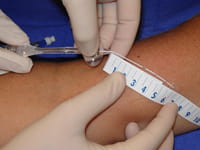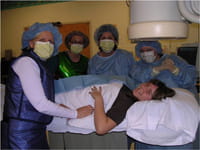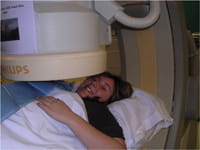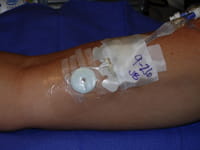How Do You Care For a PICC?

- The PICC can stay in place for a long time.
- The PICC can be have multiple lumens. For example: A single lumen PICC has one tubing and one cap on the end. A double lumen PICC has two separate tubings and two caps.
- A PICC is used to give medications, fluids and IV nutrition. If the PICC is big enough, it can be used to draw blood.
How a PICC Is Placed

- A nurse and a child life specialist talk with you and your child to explain how it is done.
- Most children are awake for the procedure.
- Steps are taken to make sure your child is as comfortable as possible.
- An ultrasound is used to access your child’s vein.
- An X-ray is taken to make sure the PICC is in the right spot.
Caring for the PICC at Home

- The PICC is flushed at least two times a day to keep it from getting clogged. You are taught how to do this by a nurse from your home care infusion company.
- The PICC dressing keeps the site clean and holds the PICC in place. The PICC dressing and cap are changed weekly by a nurse. Someone needs to help hold your child still for the dressing change.
- If the dressing comes loose and is not covering the PICC, call the home care nurse to change the dressing.
- Keep the PICC covered at all times with a protective wrap. This keeps the PICC from being tugged or pulled. The protective wrap is only removed when the PICC is being used.
- Keep the PICC dry during bathing. You can cover it with plastic wrap or a plastic bag to keep the dressing dry.
- Anyone who takes care of your child needs to learn about the PICC. They need to know how to take care of the PICC, how to recognize any problems, and what to do should a problem come up.
- The PICC is taken out by a nurse at the end of therapy. This can be done in the home or clinic.
Safety Guidelines for a PICC
- Keep a protective covering or wrap around the PICC.
- Keep the PICC and PICC dressing dry at all times.
- Keep a cap on the end of lumen of PICC, when not in use, ensure clamps are in use.
- Avoid activities that could cause damage to the PICC. This includes contact sports. Ask your home care nurse or doctor if you have any questions about an activity.
- Avoid activities that may cause sweating. Sweating may cause the PICC dressing to come off.
- Your child can return to school with a PICC. Your home care nurse will contact the school to make plans for your child to go to school with a PICC.
- Keep an emergency kit with your child at all times. The emergency kit should have tape, gloves, clamp and gauze.
Signs of a Problem with a PICC
Infection
Infection can occur with any IV device, blood tests will help determine if PICC needs to be removed or if antibiotics may be given for treatment.
Signs of a skin infection (at the insertion site) include:
- Redness
- Drainage
- Pain
- Swelling
- Warmth
Signs of a bloodstream infection include:
- Fever
- Chills
- Sweating
- Drowsiness or dizziness
- Feeling sick
PICC related blood clots
- Blood clots can form in the catheter or in the large vein that the catheter is occupying. If the PICC is still functioning and need for IV access continues, treatment of the blood clot can be prescribed and the PICC can remain for use.
PICC dislodgment or accidental movement of PICC
- The PICC is held in place with a securing device and a clear dressing.
- The PICC can move in or out if any part of the dressing comes loose.
Call your home care nurse if you think this might have happened:
- If the PICC is pulled all the way out:
- Apply pressure for any bleeding
- Save the PICC
- Call the home care nurse
- If the PICC is pulled out some of the way:
- Tape the PICC in place
- Call the home care nurse
- If the PICC has a hole or cracked. Signs include:
- Wetness under the dressing
- Puffiness or swelling at the PICC site
- Call the home care nurse
If There Is a Problem with a PICC
Call the doctor or nurse if your child has:
- A fever
- Chills, sweating, drowsiness and feels sick
- Trouble breathing or chest pain
- Any redness, swelling, pain or drainage around the PICC
- Wetness under the PICC dressing
- Rash, itching or hives
How to Prevent a Problem with a PICC
Wash your hands before doing any PICC care.
- Always keep a clean, dry, occlusive (all edges sealed) dressing over the PICC site.
- Follow the instructions for cleaning the cap and using sterile equipment.
- Avoid tugs or pulls on the PICC. Take extra care when removing clothing to avoid a pull or tug.
- If the PICC is hard to flush, do not try to force it.
- Always keep scissors and all sharp objects away from the PICC.
- Make sure the PICC is covered and secure when your child is sleeping.




